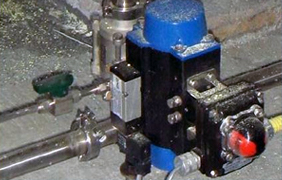Biogas is a renewable energy source that consists of a mixture of different gases produced by the breakdown of organic matter. This process can only be created with an absence of oxygen during the anaerobic digestion process. Typically, biogas is comprised of primarily methane and carbon dioxide and is created from either the combustion or oxidization of methane, carbon monoxide, hydrogen, and oxygen. These processes release energy that can then be captured and used as an energy source. From waste treatment, production of bio-fertilizer, generation of renewable energy for transportation, heating, and electricity, improved water quality, and a relatively cheap production cost, the advantages of a biogas system are endless.
Though biogas seems like an obvious choice, it is not a perfect method. Since the system is typically run in large batches, it requires large amounts of organic wastes and a lot of space and time for the batches to sit and ferment. Currently, it is not a completely efficient system due to the lack of technologies to simplify and improve the process.


